Sustainable living: the expert guide to getting it right
Sustainable living isn't always easy, but made a lot easier thanks to this expert advice on sourcing and being. .
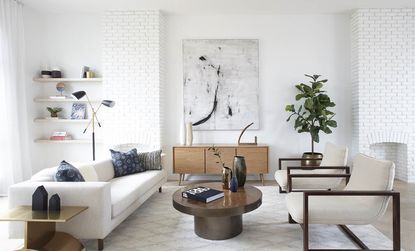


Sustainable living is one of the hottest topics amidst the design and production industries of late. A sizeable and often contentious subject, there are differing opinions and suggestions of how we must all live more sustainably. With so much to consider, we take a closer look at what it might mean to live sustainably in the here and now; why, where, and how - and we speak with those from the interiors industry to gain insider insight.
You can do much more than investing in eco-friendly products for your home (although it is admittedly a great starting point). Here, we explore other options so that we can all start helping our planet, from the comfort of our own homes.
Sustainable living meaning - a guide to what it looks like to live sustainably in 2021
Everyone has a differing opinion when it comes to the subject of living more sustainably. One thing is for sure, and that is that sustainability has - particularly in the last few years - seen a dramatic and sharp increase in awareness. The awareness is good, but the conversations around the subject can be, at times, rather confusing - are we right? Added to this some of the terminology being used by brands and business’, on closer inspection, can be deemed as showboating. However, and without getting too technical here, it’s worth noting that the latest Outlook and State of Interior Design Report (2021) has just been published by the American Society of Interior Designers, and it’s reportedly estimated that on interior design product specification alone (estimating the spend and consumption of new furniture and lighting being bought) is projected at $129.8 billion for 2021. Yikes. The total estimated cost of spend including elements such as window sales and flooring is approximated at $263.6 Billion. That’s a lot of new interiors materials and products!
With such large figures and volumes being released we need to question the sustainability of these products, and we need to make sure we understand what’s going on when it comes to how they are made, and whether we can ‘buy better’. In order to start considering the issue of sustainability transparently, we should probably start with the question: what should we be aware of when being more mindful and making changes in order to live more sustainably? Let’s split it into the current factors which appear to be on people’s minds.
The conscious consumer movement - what does it look like in 2021?
As research and awareness around the environmental changes increase, global society - generally speaking - has become more alert. Research proves that human behaviour and consumption (see the latest figures, above, from the 2021 Outlook and State of Interior Design Report) is core to why our planet and environment is changing so dramatically. The most obvious choice that consumers can make is to buy less, however this, unfortunately, is an idea that is difficult to enforce, and it would without question greatly affect the global economy. This very starting point is where opinions begin to differ and divide.
Greenwashing - what is it and why should you be aware of it?
Essentially, this is the rise of brands and press using the word ‘sustainable’ as a cover guise. Brands whose product has maybe one or two sustainable features, and so they ‘greencock’ this one feature and ignore the unsustainable elements of the product, leading consumers to believe the product is 100% sustainable when it is not.
Ed Carpenter, who is Co-founder and CEO of UK-based furniture design brand Very Good & Proper, puts it somewhat simply, saying: ‘It’s when a piece of furniture is being marketed and sold to you as being made from ‘eco-friendly’ materials, however, the same product has been shipped half-way around the world and then back again as part of the manufacturing and delivery process. This is just one example of greenwashing. It’s not sustainable.’
What sustainable interior designers and brands can we learn from?
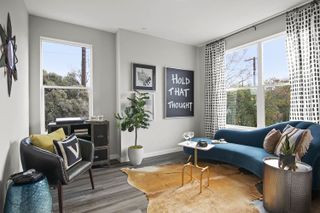
Kerrie Kelly is an interior designer based in Carolina and founder of Kerrie Kelly Design Lab, a multi-disciplined interior design practice. Kerrie is also a Board member and Chair of the National Board for the American Society of Interior Designers. As a designer, content creator and brand ambassador, Kerrie collaborates with top industry brands including Robern, Kohler, Crossville Tile, Milgard Windows, Sherwin-Williams, Coyote Outdoor Living and Mendota Hearth. Her interiors practice, which works across both residential and commercial projects, adheres to many of the interior design regulations and practices that are current benchmarks.
Kelly says, ‘As consumers have become more aware of the impact our daily lives have on the environment, interior designers have become an even more valued resource in navigating the best in eco-friendly, sustainable interior design techniques and products to maximize home efficiency while reducing environmental impact.’
‘Often, it simply starts with the color scheme. I find a lighter, brighter color scheme featuring pale, soft hues will reflect more light and create a more efficient space when it comes to lighting. Additionally, eco paint companies offer low- and no-VOC options that are better for the environment and your home. Incorporating reflective surfaces will also increase the amount of light that
bounces from room to room while lowering the use of artificial lighting. When searching for furnishings, we always look for sustainable companies that also offer performance fabrics. Sourcing performance upholstery can help the environment by staying clean and lasting longer. Alternatively, we also source materials created from recycled fabrics.’ says Kelly.
Kelly also points out the advantages of products such as rugs, saying ‘similarly, area rugs can serve double-duty as thermal and sound insulators, reducing noise and improving air quality by trapping in dust from the air until vacuumed. Heating and lighting specifications are also a part of making our client’s homes as eco-friendly as possible. It is essential that windows are of the best quality, ensuring proper insulation.’
‘If upgrading your windows is out of your budget, window treatments are a smart addition keeping cold air and heat outside while allowing you to control your home’s temperature by opening and closing them when needed. We always suggest easy to use automation controls for heating and lighting systems including halogen incandescent bulbs, compact fluorescent lamps, and LED lights as well as using timers and dimmers for increased efficiency while helping the environment - it just gives easier access to controlling energy efficiency, and on the whole makes being more sustainable, easier! Clients can also save water and energy by updating faucets and shower heads with more efficient Water-Sense models, using up to 70% less water.’ says Kelly.
Tara Benet is the Founder of Tara Benet Design and is based in Brooklyn, New York. Her chic interior schemes are driven by an approach to make wise design choices at every stage of the process; researching each product to make sure that the most sustainable option possible is put forward.
Benet says, ‘When designing our projects we promote environmentally healthy materials like low voc paints and local untreated wood for built-ins. We steer clear of products that contain toxins and instead look for green choices where possible. One area where we really push this is when we source mattresses - mattresses not only tend to have a toxic making process, but they also can spread toxic gases once in the home. That’s why we always specify the most sustainable and environmentally friendly mattress product into our projects.’
Bennet also highlights the need to actively focus on products which offer durability, but that are made from organic and more sustainable materials, commenting, ‘We also focus on durability when procuring products for a client - specifically looking at products which use organic materials and have the least impact on the environment.’
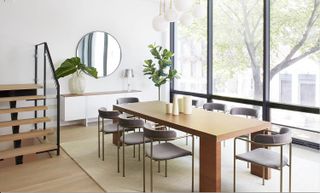
Ewa Podgórska, an Interior Designer and Founder of New York City-based interiors firm Sova Studio, says ‘Here at Sova Studio, nature-based and biophilic design is at the core of our approach to design. We believe in reconnecting our clients with nature indoors, both directly (plants, light, natural material such as wood, stone, natural textiles) and indirectly (natural patterns, processes and colors).’ Looking at Sova Stusio’s recent Upstate New York Willow House project, this ethos is evident.
Podgórska, who is WELL AP and LEED Green Associate certified, explains ‘People who regularly feel closer to nature are happier and healthier (and yes, this is backed by science!). They, in turn, are more likely to become active stewards of the natural environment. As such our work is innately sustainable. Our team goes above and beyond to source safe materials, products and sustainable furniture free of harmful fire-retardants, water-repellents and stain protection.’ Put simply, less chemicals equals happier people!
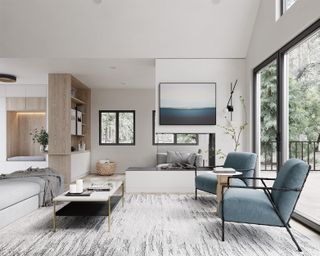
Sustainable living communities - where are some successful ones and what advice can we all take from the best?
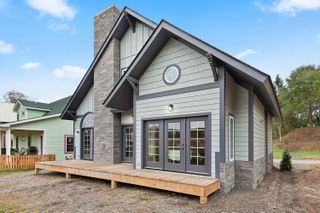
Villages at Crest Mountain
Villages at Crest Mountain is a development of homes which have been built with sustainability at the core of the project. ‘The Villages at Crest Mountain believes in the fundamental community ideals of balance and responsibility. We believe in social and ecological diversity and that built environments can be healthy, productive and stylish. We choose smart over big, health over indulgence, community over expediency, and inclusion over division. Our primary objective is to maximize the sustainability of the land, and to build environments that are green and energy efficient.’
Indeed benefits and Villages at Crest Mountain include an ‘edible landscape’ where residents have space and are encouraged to grow their own produce on the plot, and added to this the reassurance that the homes on the site have been constructed by builders licensed under the WNC Green Building Movement, applying to the North Carolina area. What can we learn from such a development? That being Eco doesn’t just mean using sustainable products and
adhering to green build regulations - it can also mean thinking ‘outside the box’ on design features such as the edible landscape concept. Thinking green means thinking about the whole environment, and that includes the garden and the food you eat, too!
Sawyer Hill Eco Village
Developed in the village of Berlin, a picturesque town in New England, Sawyer Hill Eco Village is made up of 68 homes, designed to spotlight the traditional New England aesthetic - essentially, these homes aren’t just built with sustainability in mind, they also look entirely in-keeping with the surrounding state landscape.
Spread out over a rural plot size of over 65 acres, 25 of which is set aside as permanent conservation land, 17 of the 68 homes built have been constructed under the Massachusetts 40B Affordable Housing Law - offering homes to income-qualified buyers through the State regulated system. What’s so special about Sawyer Village is its ability to provide modern ec-driven homes, but wrapped up in a traditional aesthetic. Sawyer Hill Eco Village is an example that sustainability and ‘eco’ doesn’t necessarily need to mean ‘new’ style.
How to live sustainably - the best way to live in a greener way

Be a conscious consumer
What does this mean? Simon Terry, Managing Director at Anglepoise, says: ‘For too long brands have been pushing the issue of sustainability - with all its complexities in-tow - back onto the consumer, often under the guise that the consumer wants choice. I don’t think that consumers do always want choice; they just want to know that the company they are buying from is doing the right thing. There are often situations where the consumer just wants to be directed to the best option, and it’s down to the brands and businesses to make sure that that one option is as sustainable as it can be. However not all brands are on-board with this thought, and are still driving multiple products and options. Being a conscious consumer means ensuring that, moving forward, you take time to ask the right questions before you purchase, and consider how you can be less impactful but manufacturers, retailers – anyone involved in a supply chain – also have a responsibility to help people make the right decisions.’
‘If we continue to make products that are designed for the bin, with artificially low prices, are we helping shoppers really? Is that choice? Anglepoise is dedicated to producing products which will last a lifetime and that can be fixed, repaired and kept in good working order. We are not perfect but we are on a journey to be better today than we were yesterday. Legacy is very important to me as the owner of Anglepoise’, explains Terry.
Katie Treggiden, Author of Wasted: When Trash Becomes Treasure, Podcaster and Keynote Speaker, who champions circular design and has a wealth of knowledge on the subject of sustainability in design, notes that we need to be pushing the issue of sustainability in front of state Governors and politicians at the highest political level. ‘We need meaningful change at a political and industry level. By all means take responsibility for your own carbon footprint and take measures to live more sustainably, but do also use these as a springboard to start conversations, inspire others, write to your local politician, and engage with the businesses in your area about sustainability.’
Question if something that is being sold to you as sustainable or recycled is indeed sustainable or recyclable
Having raised the issue of greenwashing (see above) don’t be caught out by it. Is the product or design piece 100% sustainable or recyclable? If it’s not, question what elements of the product or design are sustainable or recyclable. As a consumer you are also entitled to ask about the lifecycle of the item you are potentially buying. How long will the item likely last? and, if it has an expiry or life expectancy, what happens to it afterwards?
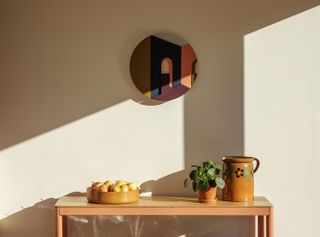
The ‘buy once and buy well’ approach to interiors and furniture consumption Ed Carpenter, who is Co-founder and CEO of UK-based furniture design brand Very Good & Proper, says: ‘As a designer and manufacturer, we focus on sustainability through longevity’. Carpenter, who is on the cusp of launching a carbon neutral chair made of recycled plastic and designed in collaboration with Paris-based design duo Amandine Chhor and Aissa Logerot of AC/CL, says, ‘A product that does not break and does not have to be replaced. A product that can be repaired and does not have to be recycled. Ultimately, when you now buy something new it’s important to understand and ask what the product is made from and where it’s made. A good supplier or company will know where their materials come from and will be able to tell you exactly where and how things are made, and that product should last a lifetime.’
Be aware of interior brands offering ‘Buy Back’
This is where they recycle your unwanted but perfectly usable furniture via the secondhand or vintage platforms. IKEA is the latest homeware brand to acknowledge and on-board the ‘buy back’ ethos. Last Fall, IKEA announced that they would be launching a service to consumers where the homeware giant buys back unwanted, used IKEA furniture and resells it to consumers at a discounted cost. An IKEA spokesperson says their Buy Back scheme aims to give furniture ‘a second life, and minimize the contribution to landfill’.
Peter Jelkeby, Country Retail Manager and Chief Sustainability Officer IKEA UK & Ireland, commented, ‘Sustainability is the defining issue of our time and IKEA is committed to being part of the solution to promote sustainable consumption and combat climate change. With the launch of Buy Back we are giving a second life to many more IKEA products and creating more easy and affordable solutions to help people live more sustainably. It is an exciting step forward in our journey towards becoming a fully circular and climate positive business by 2030’.
‘Currently, 45 percent of total global carbon emissions come from the way the world produces and uses everyday products[2], so Buy Back represents an opportunity to address unsustainable consumption and its impact on climate change.’ says Jelkeby.
Products that are eligible for Buy Back include: Dressers, office drawer cabinets, small structures with drawers, display storage and sideboards; Bookcases and shelf units; Small tables; Multimedia furniture; Cabinets; Dining tables and desks; Chairs and stools without upholstery; Chests of drawers; Children’s products excluding baby items and PAX accessories.
Look out for genuine sustainability schemes such as Cradle to Cradle (™) ‘Cradle to Cradle Certified® is a globally recognized measure of safer, more sustainable products made for the circular economy. Product designers, manufacturers and brands around the world rely on the Cradle to Cradle Certified Product Standard as a transformative pathway for designing and making products with a positive impact on people and planet. From fragrances to flooring, t-shirts and jeans to water bottles and window treatments, thousands of products are Cradle to Cradle Certified. What’s more, a growing number of brands, organizations and standards also recognize Cradle to Cradle Certified as a preferred product standard for responsible purchasing decisions.’ say Cradle to Cradle Certified®.
To break it down into its main categories, Cradle to Cradle Certified® looks for eligibility in Material Health, Material Reutilization, Renewable Energy and Carbon Management, Water Stewardship and Social Fairness. The product must excel and meet the criteria in all categories in order to be considered for a Cradle to Cradle Certified® award.
Who are the interior designers supporting reclaimed, vintage and upcycled design?
Considering the secondhand option is one of the most sustainable approaches to design. Chris Billinghurst, who is the Founder of the House of Upcycling, an authority on professional upcycling for interiors, says ‘Although shabby chic has been a popular choice for refinished furniture in the US for many years, new design options are fast gaining traction. Flat-painted furniture in soft neutral colours complement the elegance of heritage chic style whilst for more progressive interiors, furniture surfaces can be stripped back to the natural wood and embellished with bold geometric designs.’ Who’s upcycling with Pizazz? Chris says, ‘for contemporary styling with a high-end finish, visit the website of Virginia-based Martha Leone Design (www.marthaleonedesign.com/mid-century) who offer furniture designs using new or vintage carcasses.
Martha Leone Design is a furniture design company based in the Washington D.C. area specializing in refinishing vintage furniture since 2012. Martha says, ‘Locally sourcing all our pieces and supplies, our priority is to sustainably transform furniture of the past into bold, statement pieces for modern day living. We thoughtfully consider each dresser's original design and explore a contemporary expression and fresh take.
Billinghurst says, ‘the websites of Made New Design in Connecticut (www.madeindesign.com) and Ravenswood Revival (www.ravenswood revival.com) in Chicago are both worth viewing.’
Design brands who focus on whole lifecycle production?
There are also furniture companies like Emeco. Who are they? Established in 1944 in Pennsylvania, American furniture company Emeco is best known for creating the 1006 Navy Chair, made from salvaged aluminium for US Navy submarines, and still in production today. What environmental policies do they have? Emeco's environmental policy is focused on sustainability in the form of recycled materials and longevity. Since 1944, Emeco has been building chairs from at least 80 per cent recycled aluminium, and any scrap left over from the manufacturing process is also recycled. Aluminium is an endlessly recyclable product.
While Emeco's aluminium chairs are 100% recyclable, the company believes that the most sustainable aspect of its chairs is in its estimated life span of 150 years. The company also uses recycled plastic in the production of products such as the 111 version of the Navy Chair, which is made of recycled PET (rPET) from reclaimed plastic water bottles. Since the launch of the chair in 2010, over 30 million plastic bottles have been diverted from landfill, according to Emeco.
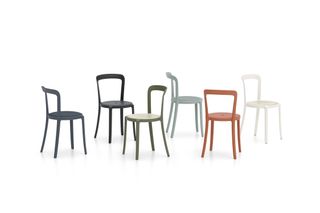
The On and On chair, designed by Barber & Osgerby and launched earlier this year, is made of the same rPET material mixed with fibreglass. Its name references its ability to be recycled again and again. In addition to using recycled materials, the company largely sources its materials within the US in a bid to reduce the high carbon footprint associated with transport. Emeco is also in the process of building a zero-energy factory in California, which will use solar energy to power its mechanical systems, appliances and heating.
Decorate with eco and sustainable paint
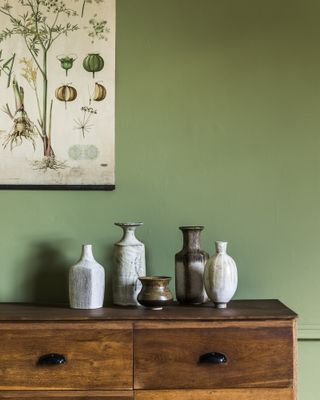
Olive paint by Graphenstone
Paint production often relies on chemicals, so it’s important to remember that if you are decorating to look for paint which uses a clean and sustainable production process. Graphenstone is a paint manufacturer that hones in on a sustainable production process and brand ethos. Antonio León, who is the CTO of Graphenstone, has committed himself tirelessly to the development and creation of the most innovative and groundbreaking line of natural paints and mortars using lime from quality local sources. The unique lime is created through using a 100% natural and environmentally friendly production cycle. Thus, a tradition which had almost been forgotten has been brought back onto the market, helping to reinvigorate the world of eco paint.
Other than the Cradle to Cradle standards, Graphenstone paints also hold and have passed industry tests such as Eurofins Indoor Air Comfort Gold, Green Tag Platinum, EU Ecolabel, AgBB and French VOC regulation A+. Planning to decorate? Look out for sustainable paint! And, if you're doing a project that's bigger than just decorative, look for eco flooring, too.
What are the best sustainable living books?
Katie Treggiden, Author of Wasted: When Trash Becomes Treasure, Podcaster and Keynote Speaker who champions circular design and has a wealth of knowledge on the subject of sustainability in design, says, ‘Oh gosh, too many to list! I love The Future We Choose, by Christiana Figueres and Tom Rivett-Carnac, for its powerful visions of the future and its simple breakdown into the three mindsets and ten actions we need to take to achieve the preferable future. It's a really good place to start for people wanting to know more about sustainability. Another really powerful book is All We Can Save, which is an anthology of women writers on climate change edited by Ayana Elizabeth Johnson and Katharine K Wilkinson – it is a brilliantly diverse compilation that includes all too often marginalised voices in this debate!
What are the easiest ways to be better at sustainable living at home?
- Consider energy efficiency and insulation. Before you think about sustainable accessories and furniture, consider the integral elements of the space you live in. What are your energy bills? By implementing better insulation and heat and cooling systems, you can not only save money in the long run, but also be more sustainable and environmentally friendly! Air source heat pumps could be a good option.
- If decorating, choose sustainable and green decorating products. When decorating a room or space, one of the most significant changes you can make is to buy a more sustainable paint. Essentially, look for natural raw materials and as few chemicals as possible. We have talked about Graphenstone, but you can also look into companies who offer a very natural Limewash, like Bauwerk.
- Opt for vintage or upcycled where possible. Before you buy new, can you buy old? This is probably the most sustainable option you can choose (as long as it doesn’t mean flying it halfway round the world for delivery, of course!) Look at vintage and upcycling companies such as Martha Leone Design, Ravenswood Revival and Made In Design.
- Always stop and think about the product lifecycle. Before you buy anything - whether that be furnishings, decorating materials or hardware, consider the lifecycle of the product. How long will it last, and if it has a shorter lifespan, then what happens to it afterwards? How much of it can then be recycled?
- Small steps. Sustainability doesn’t need to be a scary prospect. As Kerrie Kelly highlights (above) even simple steps such as laying a responsibly sourced rug down on a floor can reduce heating costs and in the mongrun create a more energy efficient home, which is better for the environment.
What are the biggest sustainable living innovations?
One of the most fascinating pieces of technology to be developed and launched is the AI Virtual Assistant, developed by Evitat. What is this? It is, essentially, a new marketplace for green, sustainable home building and ware products. A go-to portal designed to help consumers make better choices. ‘Evitat is the only marketplace for green, sustainable building materials, and home products, here in America. We are here to give renovators and home builders direct access to quality solutions and products that create comfort, healthy, efficient and affordable homes. Our AI-powered virtual assistant helps customers easily understand the benefits of building with low-impact and high-performance materials. It empowers renovators to make the conscious decision on how to spend their money when renovating and building homes by measuring their socio-ecological impact and provides them with tangible criteria for material and product choices.’ says Sonja Markoviv, Co-Founder and CEO of Evitat. We think this is an example of useful and beneficial tech, designed only to assist in the progression of sustainable design - it’s well worth checking out!
There are other examples of tech for design sustainability which maybe aren’t quite so useful, a lot of which are in-built into the product itself, and which need more research. Katie Treggiden comments, ‘I'm actually quite sceptical about the idea that technology is going to save us! Some of the best things we can do to move towards a more circular economy when it comes to interior design are about buying second-hand furniture, repairing and repurposing the things we already own, and buying from local, small-scale producers. And of course increasing our energy efficiency through good old-fashioned interventions like loft insulation and heavy curtains!’
Be The First To Know
The Livingetc newsletter is your shortcut to the now and the next in home design. Subscribe today to receive a stunning free 200-page book of the best homes from around the world.
Rory Alastair Robertson has a long-standing history working across the interiors industry. Raised in Morningside, Edinburgh, Rory grew up surrounded by classically grand Scottish Georgian and Victorian architecture.
His first appreciation for interior decoration sparked when his mother hired scaffolding and decorated their three-storey Victorian staircase in Farrow & Ball Picture Gallery Red, by herself. She then painstakingly gold leafed the drawing room - by hand - over a base coat of Sudbury Yellow. This was the era of Jocasta Innes and Kenneth Turner, when paint techniques and maximalist style were the decorating raison d'être.
With this inherited gene of creativity, Rory went on to study Interior Architecture at the University of Edinburgh, and later, Theatre Set Design and Architectural Illustration at The Rhode Island School of Design on America's East Coast.
Rory's foray with the editorial world started a decade ago at Livingetc magazine, a title which he regularly contributes to today. Specialising with a deep-seated appreciation for historical homes and interiors, Rory often travels far and wide to be inspired by unique properties with a fascinating history.
If he’s not uncovering an unusual National Trust property in the UK, then he’s seeking out a Neo-Classical clifftop villa in Capri or a Palazzo in Florence.
Based in London’s Shoreditch, working as a Senior Interiors Editor and Consultant, Rory's portfolio of work is a creative melting pot of residential and commercial interior design projects and a plethora of editorial writing work. Rory is also Guest Interiors Lecturer at the prestigious KLC School of Interior Design in Chelsea, London. His most cosseted possession is a ramshackle Citroen Deux Chevaux, which he has reupholstered in Pierre Frey yellow and turquoise silk fabric.
Discover more at roryrobertson.co.uk and @rory_stylist.
-
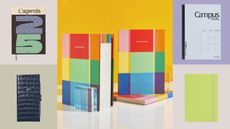 Get the Best Planners 2025 on Your Agenda — To Knock Your Year Into Shape, Stylishly
Get the Best Planners 2025 on Your Agenda — To Knock Your Year Into Shape, StylishlyWe've found the most beautiful 2025 planners and diaries on the internet so you can start the year off right
By Gilda Bruno Published
-
 6 Exercise Mats That Double as Decor — And Look as Buff as Your Yoga Instructor
6 Exercise Mats That Double as Decor — And Look as Buff as Your Yoga InstructorThis is your sign to make self-care stylish in 2025. Breathe in, breathe out, and say hello to your new favorite home workout accessory
By Julia Demer Published
-
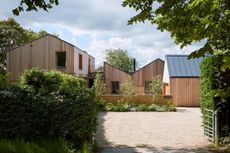 The Green Homes Grant scheme - what to do now it's been axed
The Green Homes Grant scheme - what to do now it's been axedThe Green Homes Grant scheme may have gone, but you can still build your sustainable dream home. Here's how.
By Jo Dyson Last updated
-
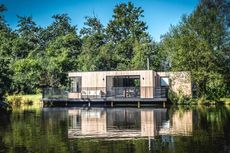 Off grid living - the expert guide to what it is and how to get it right
Off grid living - the expert guide to what it is and how to get it rightOff grid living sounds like a wonderful idea - this guide to its realities will help you decide if it's right for you
By Jo Dyson Published